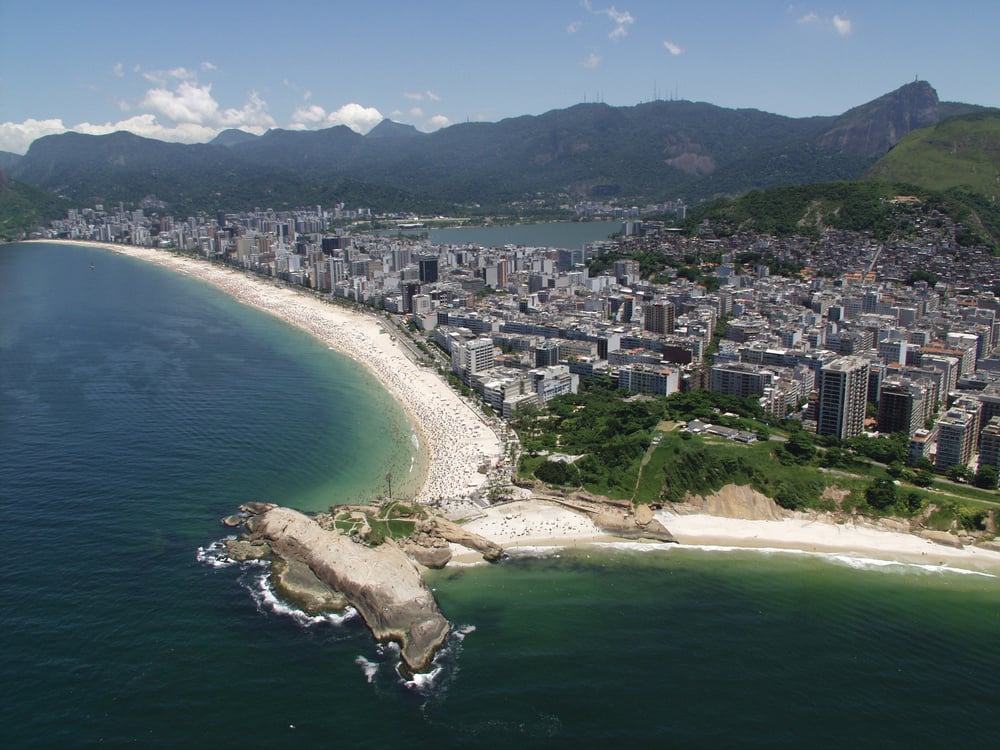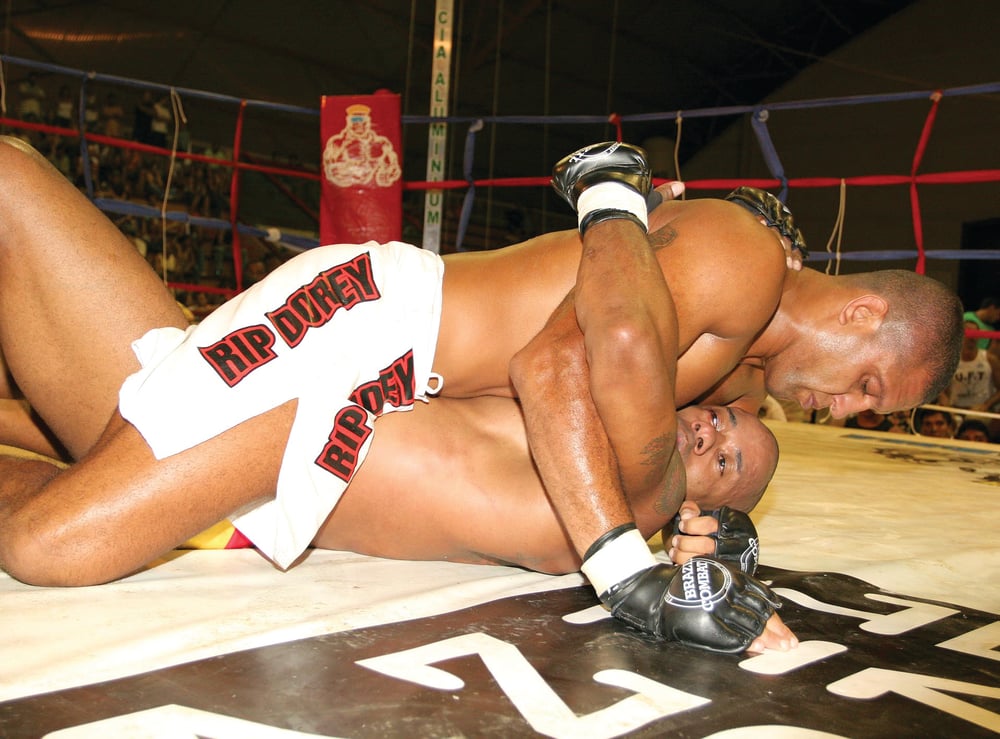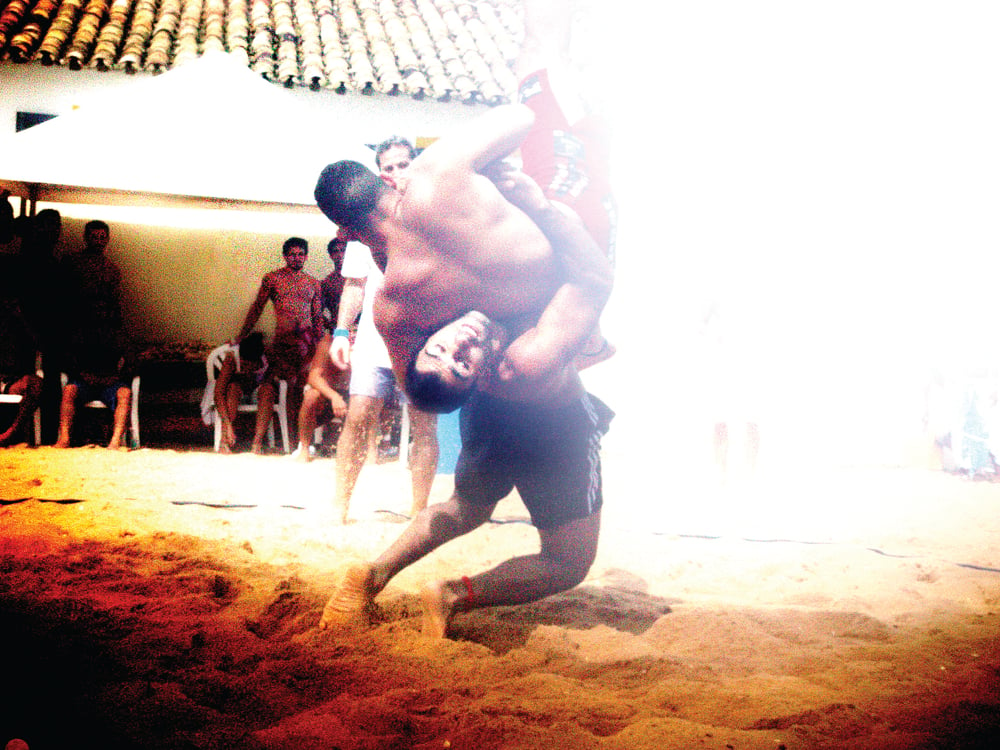
Issue 014
June 2010
Making the pilgrimage to train in the motherland of jiu-jitsu, the birthplace of Vale Tudo is something every fighter dreams of – but what are the real pros and cons of packing your kitbag and heading off to Brazil? Peter Irving, who spent a year living and training there, breaks it down in this two-part guide to visiting and training in the spiritual home of MMA.

Why Brazil?
First of all you have to analyse your objectives. What art is it that you really want to study? If you’re a jiu-jitsu fighter, especially for the gi specialist– Brazil is surely the place to be. With the Gracie invitational BJJ tournament at Seni in the U.K. and the European championships in Lisbon, Europe is heating up in the BJJ stakes. A host of top black belts have made their homes in the UK and across the continent, and European fighters are starting to make their presence felt in the Mundials.
The USA is years ahead again, having been the first port of call for Brazilian masters looking to export and expand the practice of the Brazilian method of jiu-jitsu. All that being said, you just can’t beat Brazil for jiu-jitsu. There are so many academies, teachers, practitioners and tournaments that you’re simply spoiled for choice.
Regardless of how good your teacher and team is here in the UK, there is no substitute for actual tournament experience. In the UK even the most dedicated fighters are only able to compete a handful of times every year, travelling far and wide to make it to any tournament going. The Brazilians get to compete every weekend if they care to. By the time the Mundials come around, the guy you’ll be standing opposite is walking on to the mat with “dirty feet”, and if you’re really in it to win it you had better be the same.
Brazilian jiu-jitsu is a constantly evolving art, and even with the increasing availability of books, instructional DVD’s and fight footage you just can’t substitute for being in the thick of it. New techniques are emerging all the time, and names are built up and destroyed again before word even reaches our hemisphere.

The culture of Jiu-Jitsu
So is a Brazilian Blue belt or Purple belt actually any better than their British counterparts? The answer is no, if you’re worth your belt then you’re worth your belt, regardless of nationality. The difference is that the Brazilian will probably get his Black belt years before you do simply because of the advantages afforded to him. The peaks and troughs that form the landscape of every athlete’s technical development just peak more often, and the troughs are ascended more rapidly, by virtue of the fact that training with more quality fighters naturally speeds up the learning process.
If you have an academy with a couple of Purple belts on the team here in the UK then you’re doing well, if you’ve got a black belt coach then you’re truly blessed. An average academy in Brazil will have a host of athletes in every category, with different specialities, strategies and physical types that can pose every problem and answer every question before you have to face it on the competition mat. That range of training partners is an invaluable tool for the jiu-jitsu fighter and can save you months of fumbling in the dark trying to figure out the myriad of problems that the sport throws at you all by yourself.
Aside from the potential for technical development, nowhere else in the world can offer a jiu-jitsu fighter the same cultural experience. You can become totally immersed in the culture of jiu-jitsu, not just the actual training and tournaments, but the lifestyle that goes with it. From what you eat and what you wear, the places you frequent and the people you know, right down to the way you walk and talk – jiu-jitsu fighters have a unique culture and identity that is simply a hell of a lot of fun to be part of.

MMA in Brazil
When it comes to mixed martial arts the same does not quite ring true. Vale Tudo has had bad press to contend with in Brazil just as in the west, and the sport found itself banned outright in some states, including Sao Paulo, after furious rivalries between different factions spilled out of the ring and into street violence. There isn’t as much Vale Tudo actually going in Brazil itself as one might expect.
With MMA popularity at an all time high in the U.K. you can find one show or another happening in a city near you almost every weekend of the year. Surprisingly enough in the birthplace of Vale Tudo fight shows are relatively fewer and farther between. Up and coming fighters may struggle a little more in Brazil than they do at home to find entry level fights. It is relatively uncommon for someone to start training for MMA from the outset in Brazil.
Many first time fighters in the Vale Tudo arena already hold Brown belts or Black belts in jiu-jitsu and judo and come into their fights with a wealth of grappling experience. On the other hand, barring a few very notable exceptions, the level of striking in Brazil is on the whole far poorer than in Europe. Even televised boxing and Muay Thai often features woefully inadequate fighters and the real skill in Brazilian MMA is almost exclusively to be witnessed once the fight hits the floor.
Of course the major teams like BTT and Chute Boxe have dedicated coaches for wrestling, boxing and Muay Thai but if you’re really going to travel so far afield to learn your craft then you’d be better advised to wrestle in the states or learn your Muay Thai in Thailand. Once again the real attraction comes down to the overwhelming quality of jiu-jitsu that is on offer at Brazilian academies.
Chute Boxe qualified a huge number of athletes in the lower belt categories of last year’s Mundials thanks to the recent recruitment of some outstanding jiu-jitsu coaches. Conversely, Gracie Barra Combat team has recruited some outstanding Vale Tudo fighters and equipped them with fantastic jiu-jitsu skills, just look at the renaissance of Babalu, with a string of submission victories over top fighters in the U.F.C.
For the modern MMA fighter with limited time to master all aspects of the game, there is no better place to train jiu-jitsu with intensity, and make leaps and bounds in submission skill fast.
In the gym
If you haven’t already decided in advance where you will train it’s a good idea to shop around before you commit yourself. You’ll probably find the people you train with will invariably form most of your social group while you’re out there, so choose wisely.
The most important thing is to find a teacher you can communicate well with, not necessarily in terms of language, but someone who is on your wavelength. You’ll often find that students are attracted to likeminded teachers and inevitably take a lot of cues from their teacher, for better or for worse. Don’t spend all that money just to go there and get beaten up by meatheads, you’ve got to train hard – but equally you’ve got to love your time there to make all the sacrifices worthwhile.
The general assumption in Brazil is that all foreigners are absolutely loaded, that poverty doesn’t exist in the west, and particularly if you’re white then you’re loaded down with dollars and thus fair game for exploitation. If you are going to part with a lot of your hard earned, be sure you’re getting what you’re paying for. Get private classes with a top Black belt, a good name; don’t get fobbed off with the Blue belts and Purple belts while the master you travelled so far to train with is off at another academy, with other students or away fighting somewhere.

Getting what you’ve paid for
Many Gringos wind up paying over the odds for ‘rice and beans’ jiu-jitsu that you can learn anywhere. Don’t pay a guy $200 per hour to show you a straight armlock just because his name is Gracie, there is no shortage of great teachers in Brazil – seek one out. There is a huge variety in the way different gyms train and the style they emphasise. Some gyms have a strict Judo style etiquette complete with bowing and lining up parade style, others are totally laid back- some even to the point where guys spit, snot and walk on the mats in outdoor shoes. Most gyms are somewhere in the middle ground. Be sure to find an academy that fits with your idea of the right training environment, don’t underestimate the importance of feeling at home in the atmosphere; it will affect your development and competition performance.
If you’re doing a spot of gym tourism – going from one academy to another from week to week or day to day – you may well be advised to keep that information under your hat. Training at more than one team is not just frowned upon; in Brazil it’s a cardinal sin. Being a ‘Creonte’ (traitor) is a serious offence that harks back to the days before videotaping and cross training, the time when a teacher’s techniques were truly secret. Today things are a little different, all the information is out there if you really want to get it, but it still insults one team to go across to another and invites ill will to traverse academies – or even in some cases more than one teacher within the same academy.

First impressions last
When you arrive at an academy you should be bold and introduce yourself, especially to the black belts and the master in particular. If you’re polite to the point of being shy that may well be misconstrued and you’ll find yourself being met with suspicion. Do your best with whatever Portuguese you’re armed with and if you’re lucky someone with good English will step in to save you. A little effort goes a long way and first impressions count for a great deal.
If you go to someone else’s gym you need to be wary, you’re essentially going into a competition. You’ll be sparring with the best fighters and they’ll be going for the kill. It’s not a bad idea to get around and train with a lot of people, but don’t expect a light little roll around. They’ll all want to tap out the ‘gringo’, and they’ll be determined not to be submitted by a foreigner.
Ultimately this is what your trip is all about; the academy you choose will determine whether you’ll have the greatest time of your life or an absolute nightmare.
Be sure you end up where you truly want to be, with people who can- and want- to help you achieve your goals and realise your dreams.
Next month . . .
Where to live, where to go, what to do! The inside guide to being in Brazil.
...









